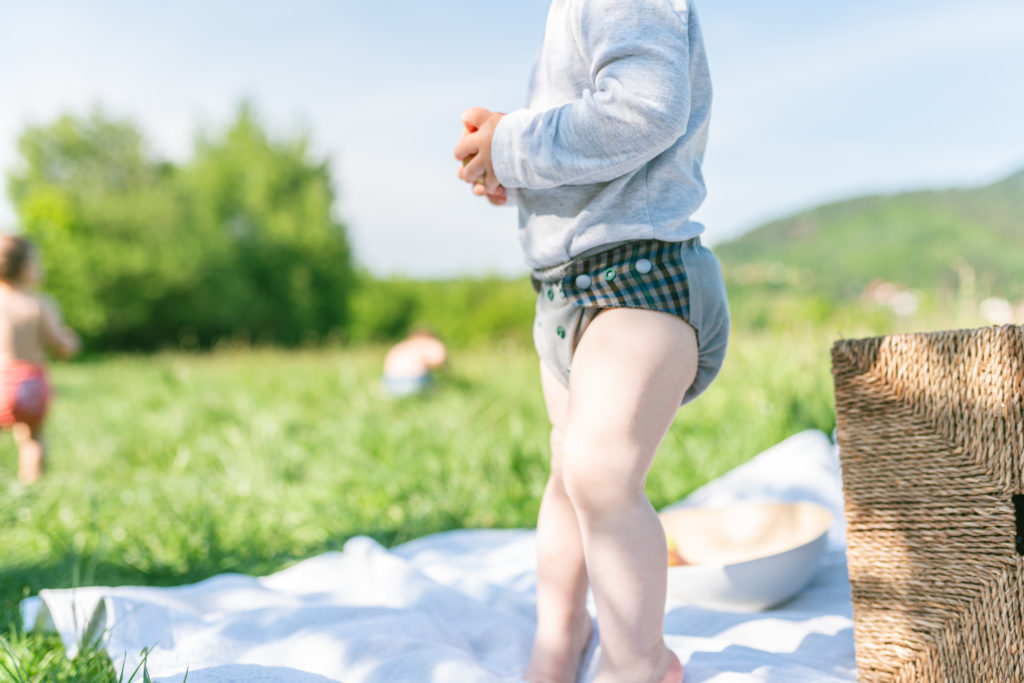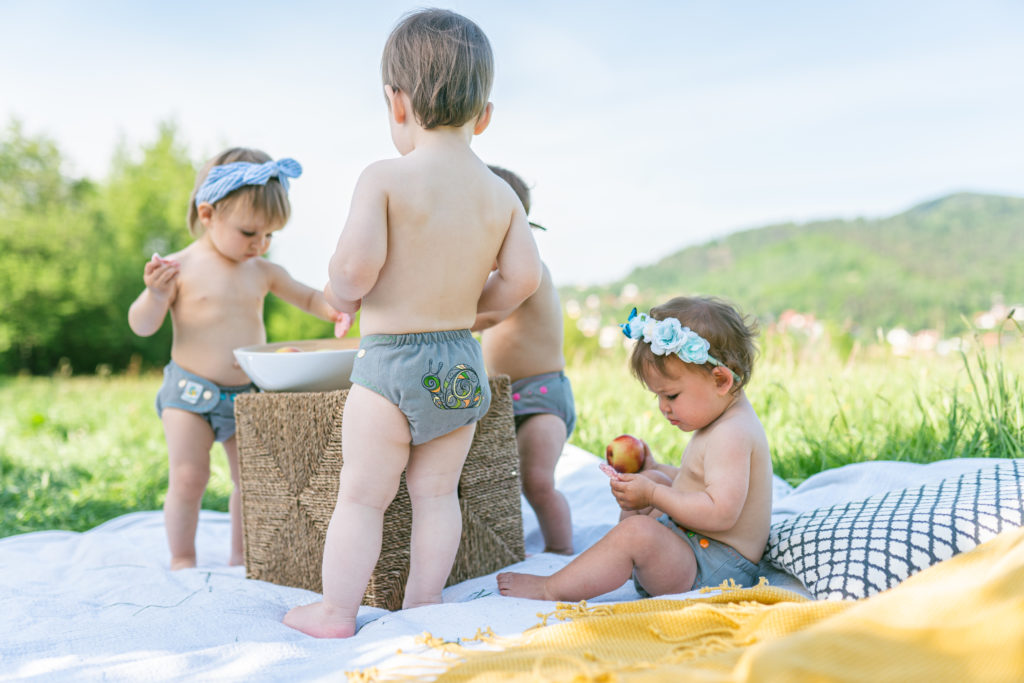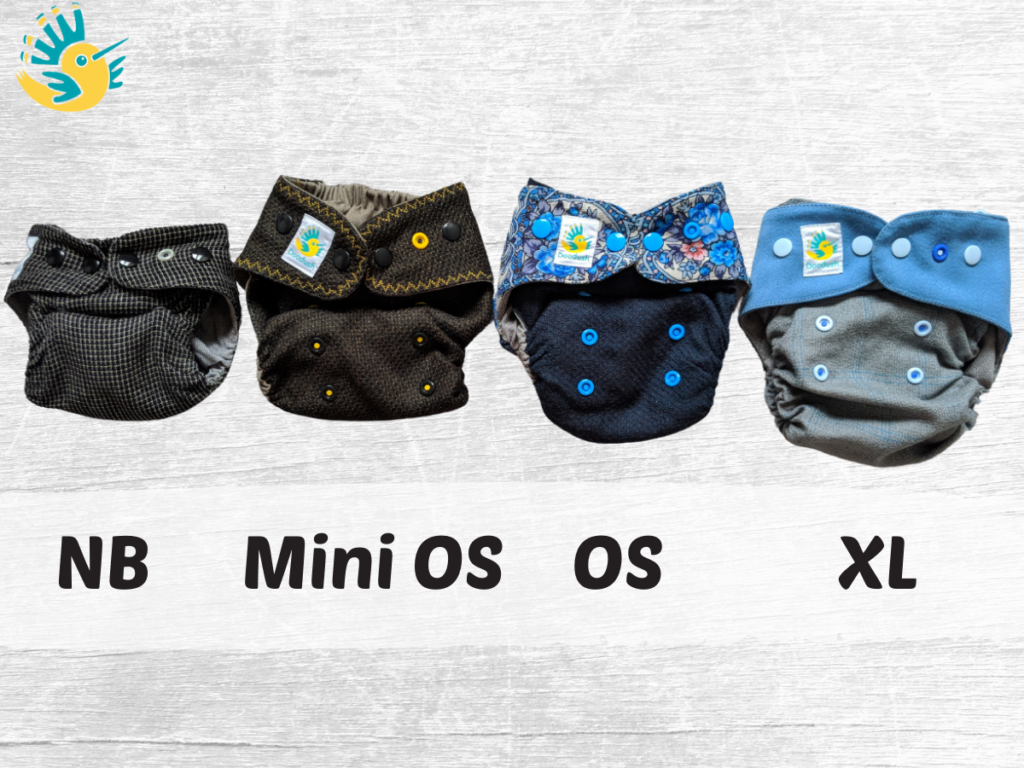Cloth diaper guide
Cloth diaper guide – wool covers
Wool diapers are a great choice! However, they require a proper care. Be sure to read our guide.
Table of Contents:
- A few words about our wool diapers
- How to choose the right size?
- Selection of the absorbent insert
- How many wool covers will you need?
- Washing and use instructions
- How to lanolize wool covers?
- The highest quality of wool = delicate wool
A few words about our wool diapers
Doodush woolen covers are made of 100% two-layer, best-quality Australian merino wool woven in Poland. We use the highest quality threads and attested, certified and durable KAM snaps. Their densely distributed system allows you to quickly adjust the diaper to the anatomy and weight of the child. Elastics around the legs prevent leakage, and a flat elastic on the waist helps to properly adhere to the child’s skin. We offer wool nappies of various textures, colors and thicknesses.
How to choose the right size?
Our woolen covers are available for the weight range of 3-20 kg in 4 sizes to choose from: NB, MiniOS, OS and XL.
NB Size (Newborn)
It is dedicated to newborns in the 3-5 kg weight range. The upper limit is related to the child’s body build and depends on the individual preferences of the parent who decides which absorbent element she/he will use.
MiniOS (Mini One Size)
It can become an intermediate size between NB and OS, or in the case of slim children, the target size. This size of our woolen diaper will fit perfectly on babies from approx. 5 kg to approx. 11-12 kg. The upper limit, like the size of NB, is dictated by the child’s body build and the absorbent insert used.
OS (One Size)
It is designed for children from 7 kg to 14-15 kg. This size will be the perfect solution for larger children, for whom the MOS size was not well-adjusted.
XL
This size was designed for older children for whom the OS size (which is sufficient for most babies until the end of the diaper period) is already too small. XL covers are slightly wider and a bit longer. There is also no problem with fastening the diaper on a child that already has a larger waist circumference.
Selection of the absorbent insert
For Doodush wool covers, you can use any absorbent insert that matches the size of the diaper, so that the insert in the crotch is covered with the cover and does not protrude beyond its edges, as the diaper may leak.
We especially recommend our cotton-bamboo inserts: https://doodush.com/en/product-category/absorbent-inserts/natural-inserts/. The combination of wool covers with natural inserts is the most airy, ecological and natural way to diaper a child.
How many woolen covers will you need?
For newborn
The number of diapers needed depends not only on the age of the child, but also on its individual characteristics. There will be more of these changes in the newborn period due to the large number of feedings and the unstable number of poops. A newborn cloth diaper stash should contain around 20-30 nappy changes, but that doesn’t mean you’ll need 30 covers and 30 inserts. On average, if you use only wool covers with inserts and wash every two days, you will need about 4-5 covers and about 20-30 inserts.
It is worth to remember that wool does not require washing as often as we wash PUL covers. Usually you should only air them between uses. If the cover is heavily wet with urine, it should be rinsed in lukewarm, running water and left to dry (flat). A wool cover requires washing only when it starts to smell different than usual (after the airing) or it has become dirty with a poop. So if you choose woolen covers you will need less of them than if you would choose PUL covers.
For an older child
When it is time for OS diapers, you will likely need fewer changes as the number of feedings will decrease and the number of poops will stabilize. On average, a younger baby will need about 12 nappy changes a day. After 6 months of babys age, when you start extending the diet – around 8-10. However, these are examples of amounts, and often for babies who urinate more than a standard baby, many more changes are needed. In a very short time you will be able to see how many changes your baby needs and which diaper system is the most convenient for you and your baby.
Of course, remember that you can also use a mixed system, using alternately PUL covers, woolen covers, pockets, SIO or AIO.
Washing and use instructions
Wool diapers should be washed rarely, they should be simply aired between uses. Washing is necessary only if it gets dirty or it still smells like urine after airing. The lanolin in wool breaks down urine into salts and water, which evaporates when the fabric is aired. After airing out, we can use the same cover again.
If the cover gets wet with urine, rinse it in lukewarm water and dry it (laying it flat) before using it again. However, it is best to prevent this situation by choosing an appropriately absorbent insert and changing the diaper frequently enough.
If you have multi-color wool cover it is a good idea to do a vinegar treatment before the first wash. That fixes the colors and prevents dyeing. To do this, mix water and vinegar in a ratio of 1 cup of vinegar to 2 cups of water. Soak the diaper in the water and vinegar for about 30 minutes, and then wash it and lanolize.
Wool covers should be washed by hand in a wool washing liquid (we recommend ecological wool washing liquids, because some drugstore liquids tend to be less gentle on wool), at a temperature not exceeding 30 degrees. When washing, remember that wool does not like rubbing, wringing and sudden changes of the temperature (so the water temperature during washing and rinsing should be the same).
After washing and rinsing, the cover should be dried – use a towel to absorb excess water. Then lay it flat, away from any heat source and allow it to dry naturally.
How to lanolize wool covers?
Wool covers must be properly impregnated to isolate moisture. This process is called lanolination. Before the first use our covers usually do not require a lanolin treatment (unless they have been put in water with vinegar).
How often is lanolination necessary?
The frequency of lanolin treatment depends on several things:
- how often the cover is used
- whether using inserts are absorbent enough / whether the diaper is changed frequently enough
- how many times the cover has been washed in the meantime (it is not always necessary to lanolise after washing)
Usually, wool covers should be lanolized once every few weeks. The signal that tells us that we should lanolize the cover is that it starts to let moisture out.
How to lanolize wool covers?
- the cover should be washed and dried.
- fill a jar with a capacity of approx. 1 liter with approx. 250 ml of boiling water, add 1 teaspoon of soap flakes and 1 teaspoon of lanolin, mix thoroughly,
- slowly add approx. 600-700 ml of cool water, so that the lanoline treatment after mixing is approx. 30 degrees,
- immerse the cover and leave in the lanoline treatment for about 4 hours. If you lanolize multi-colored covers, it is worth using a color-catching cloth to avoid dyeing,
- take it out, rinse it in cool water, squeeze it in your hands (do not wring it out!),
- place the cover between 2 layers of towel and squeeze to release excess water, dry flat.
The highest quality of wool = delicate wool
Our covers are made of exclusive wool of the highest quality. This causes that they are delicate and sensitive as well. It is important to strictly follow the care rules described above.




